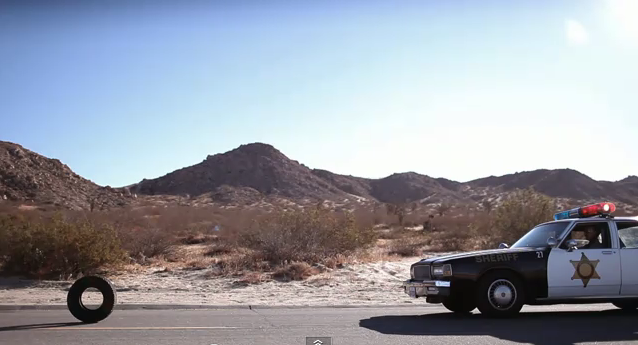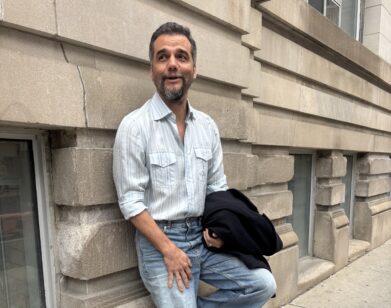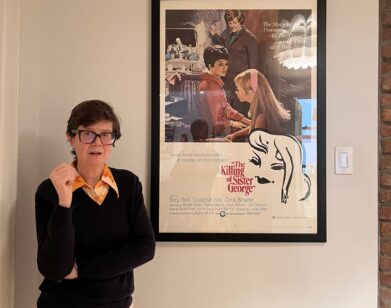Quentin Dupieux, Speed Demon

Lost somewhere between sketch comedy and grindhouse horror is the decidedly unique film Rubber. Shot by Quentin Dupieux (also a musician, under the pseudonym Mr. Oizu), the surreal film features a Greek chorus of film nerds, a few exploding rabbits, and a homicidal tire named Robert. Adding to the film’s unabashed wackiness is the way in which it was shot. An exercise in speed filmmaking, Dupieux conceived, shot, and edited the film in nine months.
Prior to Rubber, Dupieux had been working on another film when it became mired in pre-production. “I was bored. I needed a project easy to shoot… so my producer checked his bank account and said, ‘Okay, this is what I have. We should shoot with that amount.’ I quite liked this energy,” Dupieux says. Aiding the breakneck pace was Dupieux’s decision to shoot exclusively on a handheld camera with video function. “It’s a strange animal. You can go fast. With Rubber, we were shooting all day. Nobody was waiting. It was, ‘Shoot! Shoot! Shoot! Okay, time for bed.'” Filmed in the California desert over two weeks, the camera picks up the bleak, sunlit landscapes beautifully and looks virtually indistinguishable from a more traditionally shot film.
Yet the rest of the film is not at all traditional, with its main character played by a tire and fourth-wall-breaking bunch of onscreen audience members. Somewhat whimsical and somewhat terrifying, the main character, “Robert,” was created with simply a spare tire and camera trickery. Dupieux admits directing his main star was a bit of a pain. “The personality of the tire [is] so limited. You can’t project anything. It was like a dog, waiting.”
One of Dupieux’s main goals was to pare down the story to its most basic elements: an outlaw, a sheriff, and an audience watching the whole thing from afar. “Actually my main influence was the Spielberg [television] movie Duel. He did tons of shots of the guy driving and truck driving—and just [edited it,] basically. The tension is incredible, and it’s just a truck driving.” But Dupieux pushes it one step further from Spielberg’s film. Instead of a truck driving menacingly, there is simply a tire rolling along a dusty highway—looking for trouble.
While many films revel in a CGI wasteland, Rubber has some of the most engaging—if simplistic—special effects of the year. For Dupieux, the audience’s reaction has been a little mind-boggling. “[It’s] very, very funny, because we see these big movies with incredibly good special effects everywhere,” he says. “Here, it’s just a tire, and everybody is asking, ‘How did you do that?'”
RUBBER IS OUT ON VIDEO ON DEMAND TODAY AND COMES TO THEATERS IN APRIL.






